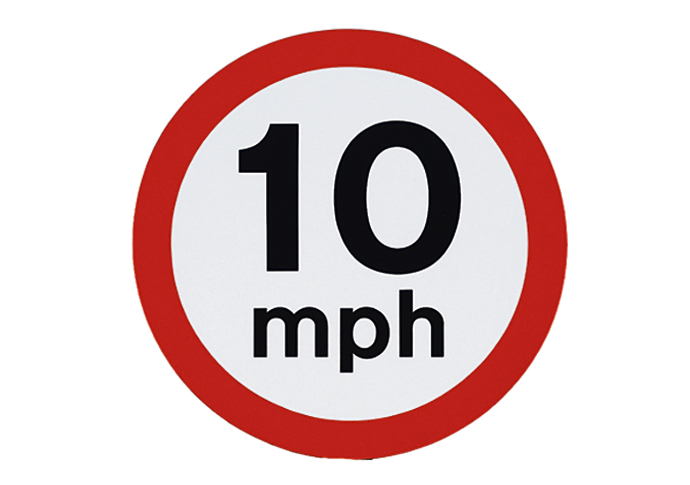Parents in a 10mph speed limit dream
Super slow road sparks debate over how fast everyone is driving
Friday, 31st October — By Daisy Clague

A NEW 10 miles per hour speed limit on an Islington road has sparked uproar among drivers – but safety campaigners told the Tribune it isn’t such a bad idea.
The contentious new restriction has been painted onto the tarmac in St John Street, which runs from Farringdon’s Smithfield Market to Angel.
For context, a jogger, the 1886 Benz Patent-Motorwagen – the world’s first car – and a dolphin all travel roughly at the speed of vehicles on the stretch of road.
The measure will be in place for the next six months while Islington Council installs new trees, seating, a cycle lane and wider pavements.
Drivers have dubbed the 10mph limit – almost unprecedented on a usually 20mph London road – a “ridiculous” and “disruptive” move by a “Labour-run council”, but chair of Islington Clean Air Parents Lucy Facer told the Tribune it could be a “bold step” towards safer streets in other parts of the borough.
She said: “We have asked the council to reduce speed limits around schools – children are particularly vulnerable, so it would obviously make it much safer, and reduce air pollution.
“It’s something that should be looked at for other areas where children are known to be in big numbers, such as near parks and other community spaces. How about Angel shopping centre, where there are lots of pedestrians? That could be pedestrianised, but 10mph could be a good middle ground.”
Research by the Road Safety Foundation (RSF) shows that vehicle speeds between 10mph and 20mph could help to avoid serious injury or death to pedestrians or cyclists in a crash.
Researcher Brian Lawton said: “It was lower than we expected. It’s always the case that the faster a vehicle goes, the less time the driver has to react to a hazard and the more injurious a crash will be.
“For that reason, our report effectively said that you don’t want motorised traffic going faster than 20mph – potentially even lower than that – in areas with lots of pedestrians and cyclists.”
RSF does not necessarily advocate for specific speed limits, rather its research shows the speeds at which injury and death can be most effectively reduced.
“It’s better if drivers are educated about what speed to go at and why,” Mr Lawton added, noting that car parks, hospitals, schools and roads narrowed by building works – as in St John Street – are environments where motorists would likely slow down anyway. “Broadly the public is supportive of speed enforcement, but there’s a vocal minority who are against it,” he said.
“I can understand the temptation – it’s good reading – but sometimes media coverage can give a misleading impression of what the public’s view is.”
Green councillor Benali Hamdache told the Tribune the temporary speed restrictions in St John Street are “entirely sensible”.
“It was thanks to a Green councillors’ negotiation that we have a 20mph limit in Islington, and it’s made a huge difference to making roads safer.
“I can certainly see that in some streets there might be a case to reduce speed limits further. The roadworks [in St John Street] are making the road very constrained, so I can see why it might make sense in this context.”
Islington’s environment chief, Labour councillor Rowena Champion, said: “In late 2024 we held a public consultation on our plans; local people told us about the importance of creating a greener, more accessible, and pleasant street environment for residents and local workers. These changes will do just that. The works at St John Street require temporary narrowing of the carriageway.
“During this time, in order to keep local people and road users safe, we have put in place a temporary 10mph speed restriction.
“We continue to work with local residents and businesses to ensure that access to all addresses and businesses is maintained throughout the works, and disruption is kept to a minimum.”